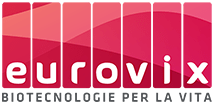AQUA
Specific products for the water sector that improve
the ecological characteristics of water resources.
EUROVIX
Bioenhancers for water
Sustainable solutions for aquaculture and aquatic ecosystems.
Eurovix bioenhancers are used to restore, optimise and accelerate the self-purification processes of aquatic ecosystems (nitrogen and phosphorus cycles), stabilisation and mineralisation of organic matter in the sediment.
It is often considered a B.A.T. (best available technology) because it is the only one that can be applied in complex environments (flowing waters) or very large ones (seas, lakes and large lagoons) at limited costs and without creating impact on the site and nearby areas.
To be applied, it does not require special structures, uses little energy and does not interfere with the normal activities on the site (fishing, navigation, sports activities, etc.); in fish farms, the use of bioenhancers in the tank improves zootechnical performance and, when discharged, minimises environmental impact.

USING EUROVIX PRODUCTS ENABLES
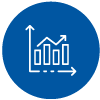
Increased productivity
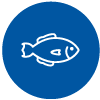
Animal
welfare

Reduced
production costs
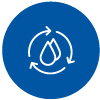
Improved efficiency of waste management systems

Eco-sustainability
Aquaculture
Fields of application
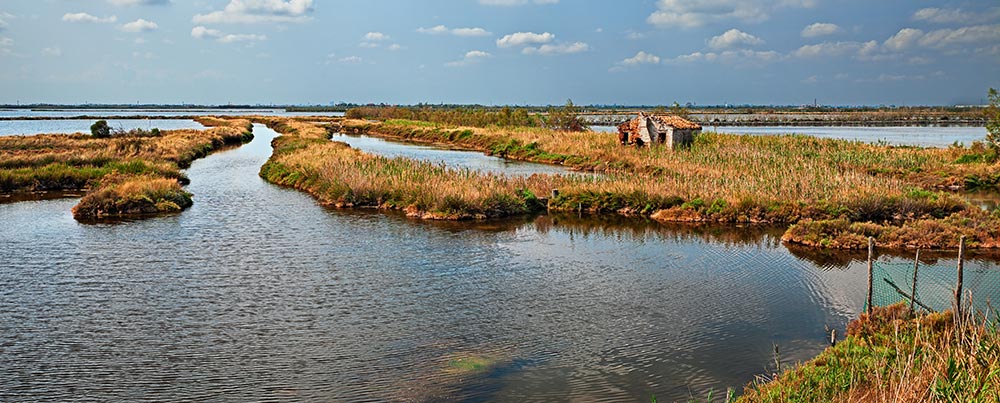
_
EXTENSIVE AQUACULTURE
In extensive farming, the basins are large and human intervention is limited to hydraulic water management. Over the years, both organic matter and nutrients accumulate in the sediment, generating eutrophication phenomena that cause anoxia and reduce productivity.
As with large reservoirs, biological technology is the only cost-effective way to increase productivity without compromising the ecosystem.
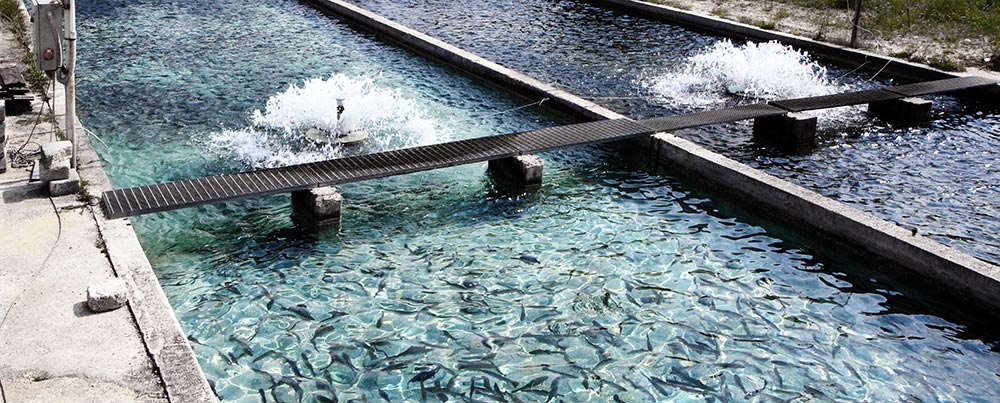
_
INTENSIVE AQUACULTURE
Large numbers of animals are concentrated in small spaces, the water needs to be oxygenated and changed frequently and the fish are typically fed with industrial feed. Stress for the animals is very high, as is the frequency of disease.
The use of Eurovix bioenhancers improves water conditions, reduces stress factors, contributing to animal welfare, and increases zootechnical performance. This decreases the need to use oxygen and energy for water replacement, and the cost savings are already evident from the first months of treatment.
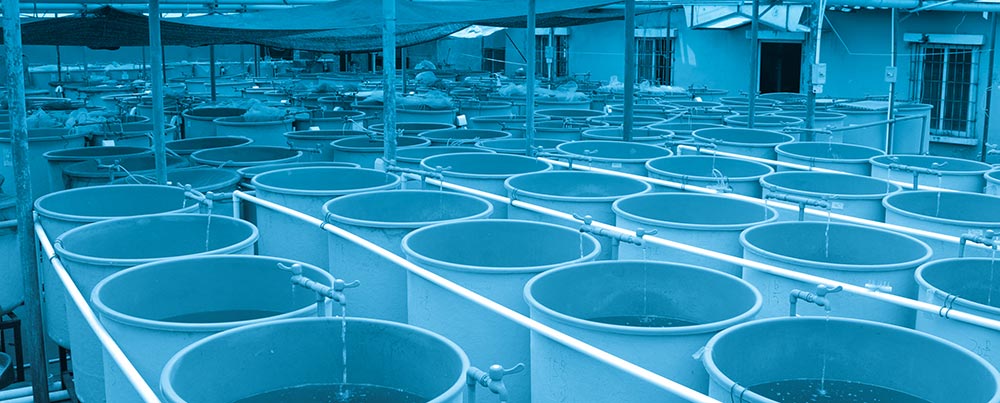
_
RECIRCULATING AQUACULTURE SYSTEM (R.A.S.)
In R.A.S. farms, usually in closed environments, water is continuously recycled and filtered through high efficiency biological filters, thus reducing water consumption.
The R.A.S. system is very complex to manage and requires a high degree of professionalism on the part of the operators who work to keep the chemical-physical and microbiological characteristics of the recirculated water stable.
The systematic use of Eurovix bioenhancers helps management operations by reducing the accumulation of organic matter, accelerating the kinetics of nitrogen compounds in the biofilters and lowering the stress level of the animals. This leads to significant economic benefits due to increased machine efficiency, energy savings and improved quality of recirculated water.
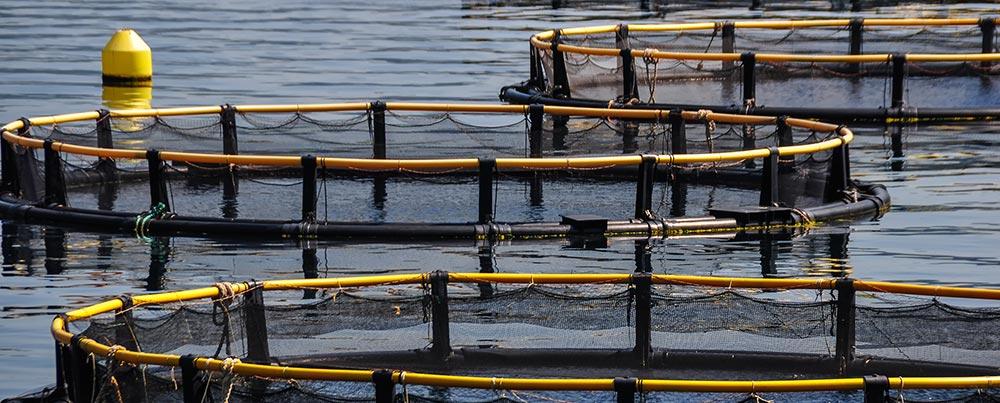
_
FLOATING CAGES
Floating cages are considered the future of marine aquaculture, along with closed cycles.
When placed far from the coast on deep bottoms they use good quality water, but they are subject to weather events and are difficult to manage. When placed below the coast, the cages are more protected and can be better managed and cared for; however, they generally do not enjoy favourable environmental conditions (shallow waters, poor water circulation) and self-pollution phenomena reduce production capacity.
The use of Eurovix bioenhancers in cages placed in unfavourable environments (with poor internal circulation) increases zootechnical performance by reducing ammonia concentration and fish stress. Bioenhancers applied on the bottom underneath the cages reduce the organic matter that settles over time and creates degenerative sediment phenomena (bottom anoxia, development of toxic gases).
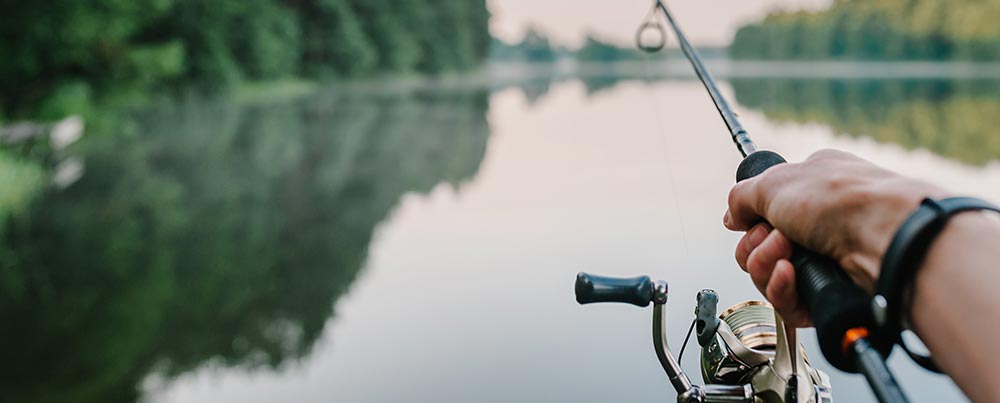
_
SPORT FISHING LAKES
Recreational fishing lakes are precarious ecosystems because they are destabilised by the constant input of pasture and fish that are not always of good quality. The fishing action and continuous catch and release cause stress to the fish themselves.
Good water quality management ensures optimal fishing capacity of the lake. The accumulation of organic matter on the bottom, due to the systematic use of pasture or natural causes (leaves), produces chronic or acute degenerative phenomena, such as the lack of oxygen in the water column, the growth of algae and macrophytes, the development of toxic gases.
The fish, already stressed by the fishing action, get sicker more frequently and often die. The use of chemical products contains the problem in the short term, does not solve its causes and often generates no less harmful side effects.
In contrast, the use of Eurovix bioenhancers improves water and sediment quality, promotes animal welfare, increases oxygen availability and enhances fishing capacity.
Aquatic Ecosystems
Fields of application
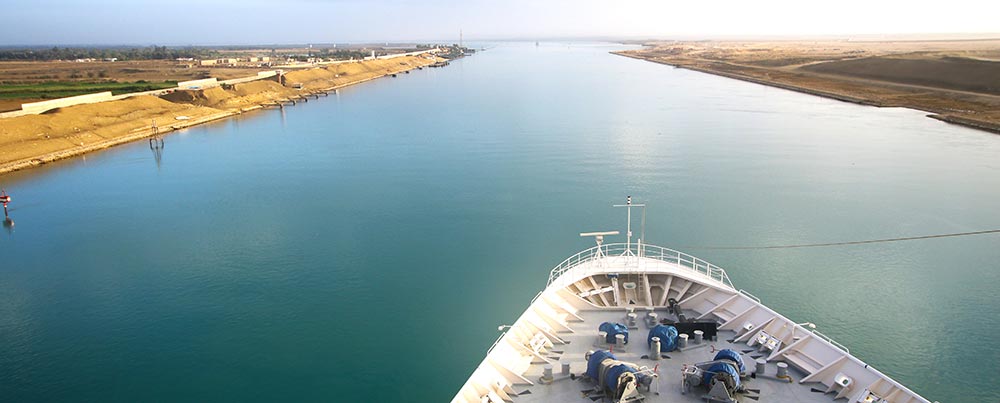
_
RIVERS AND CANALS
Biological technology can also be used in watercourses with high flow rates, using special techniques for the distribution of bioenhancers.
The ecosystem will see appreciable improvements even in a short time, especially in periods of low water flow, where water stagnation and the formation of bad odours are common. The results are particularly visible in canals with discontinuous flows, in urban environments and in tourist areas.

_
NATURAL AND ARTIFICIAL LAKES
All water basins, large or small, artificial or natural, deep or shallow, fed or stagnant, suffer from eutrophication and sediment degeneration; chronic, acute, generalised or in limited areas.
The only technology that can be applied is biological, because it does not require impacting structures and is economically competitive with any other technology (chemical, sediment removal, forced oxygenation, etc.). Bioenhancers can be applied, always with high efficiency, even in small, undefined areas of a large basin or for reduced periods (for the duration of acute pollution phenomena).
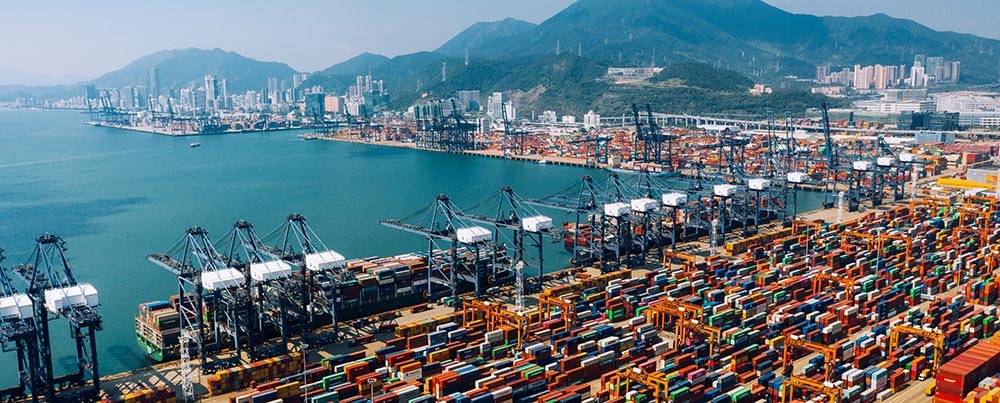
_
PORTS
In ports, large quantities of polluted sediment accumulate which, if it does not have to be removed for navigation reasons, can be treated in situ with biological technology in order to stabilise the organic substance and decompose the biodegradable elements.
In port areas we also find polluted water from improperly purified civil discharges, small quantities of hydrocarbons from boats or petrol stations, dead algae accumulating in corners or rising to the surface, all of which are compatible with the use of biological technology.
The environmental impact of dredging operations can also be mitigated by using Eurovix bioenhancers applied during the work. In fact, the use of bioenhancers in ports does not interfere with the normal activities that take place there.
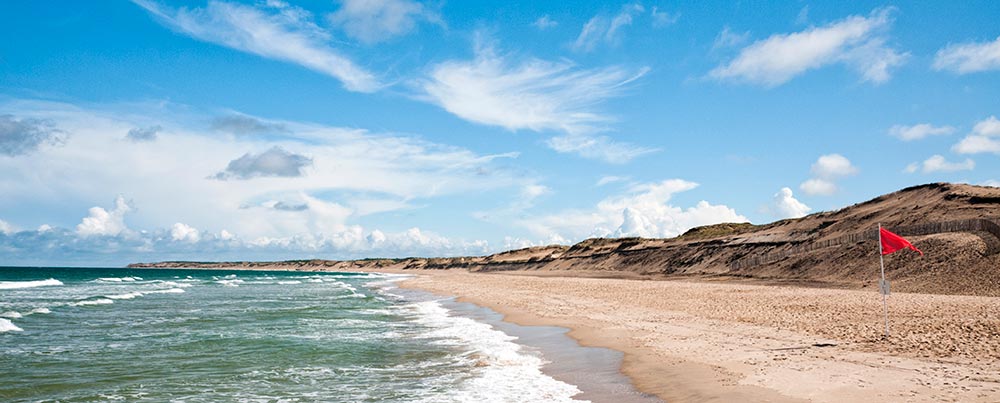
_
BATHING AREAS
Over five thousand km of Italy’s coastline are subject to bathing controls: of these, over two hundred km are not suitable for bathing.
The causes that compromise bathing parameters are mainly due to the discharge of untreated or imperfectly purified civil waste into the sea through canals and rivers.
The application of Eurovix bioenhancers, immediately downstream of the source of pollution (inefficient purifiers, by-passes, illegal discharges), restores the microbiological parameters to the values required for the authorisation of bathing without creating environmental problems for the ecosystem and the fauna in the area, or health problems for the population.
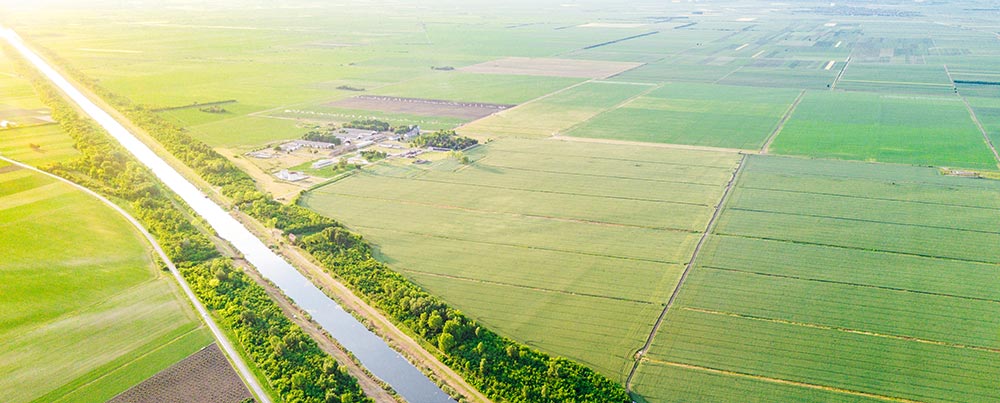
_
IRRIGATION WATER
There are basically two problems related to the management of water intended for irrigation: the chemical and microbiological characteristics, which are fundamental for the use in edible crops; the eutrophication phenomena which reduce the efficiency of the irrigation circuits starting from the canals, passing through the filters (when they are used) to the sprinklers.
The more extensive the irrigation network (Land Reclamation Consortia) or the more technological (fertigation, drip irrigation, precision irrigation, etc.), the more eutrophication phenomena (growth of algae and macrophytes) compromise the efficiency of the systems, increase management costs and reduce nominal water flows.
The use of chemicals is very often not compatible with irrigated crops. High filtration technologies are expensive and difficult to manage, while biological technology is the simplest, least invasive and cheapest solution to apply.
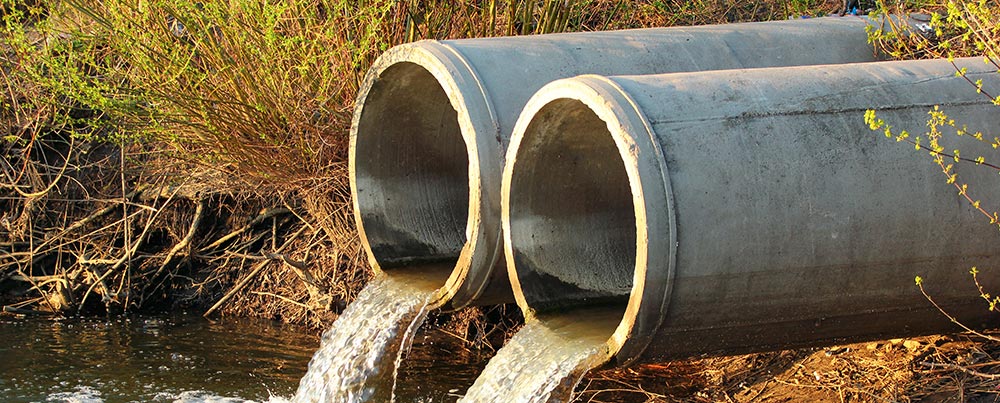
_
DRAINAGE AND OVERFLOW CANALS
Drainage spillways and overflows are structures that save sewage treatment plants and sewerage systems from overflows during periods of heavy rainfall, releasing raw sewage directly into the receiving water body.
Very often, if hydrodynamic conditions do not favour dilution and dispersion, the effluent remains in the immission area, compromising water quality (e.g. bathing parameters).
With appropriate technologies based on bioenhancers the drained effluent can be treated to reduce the environmental impact it has on the downstream ecosystem.
